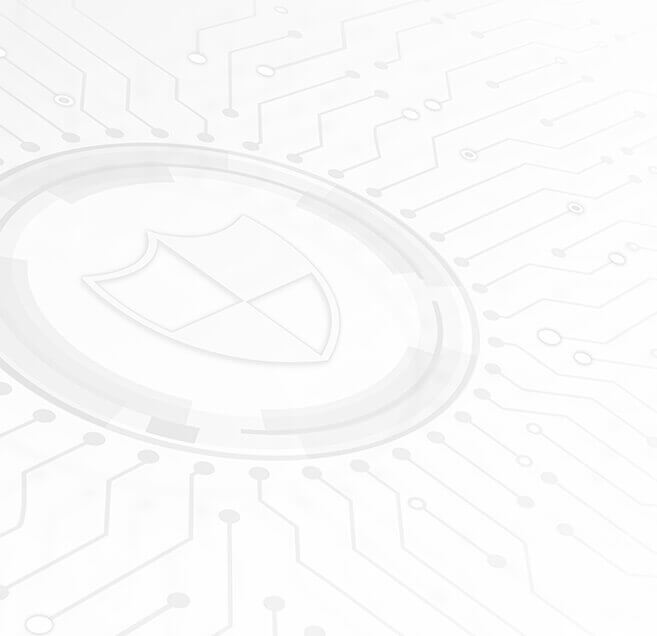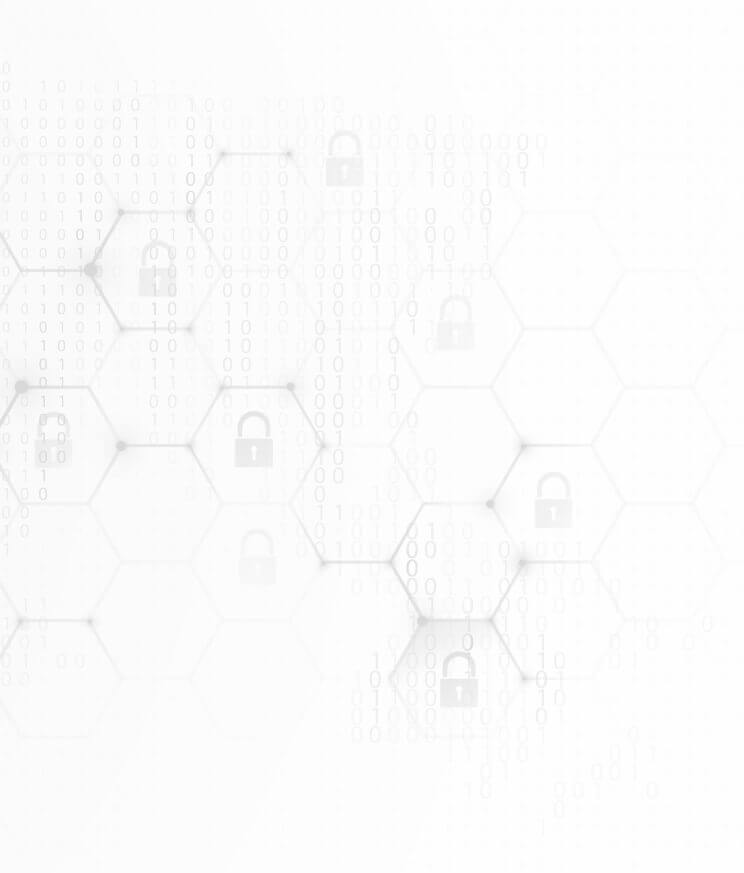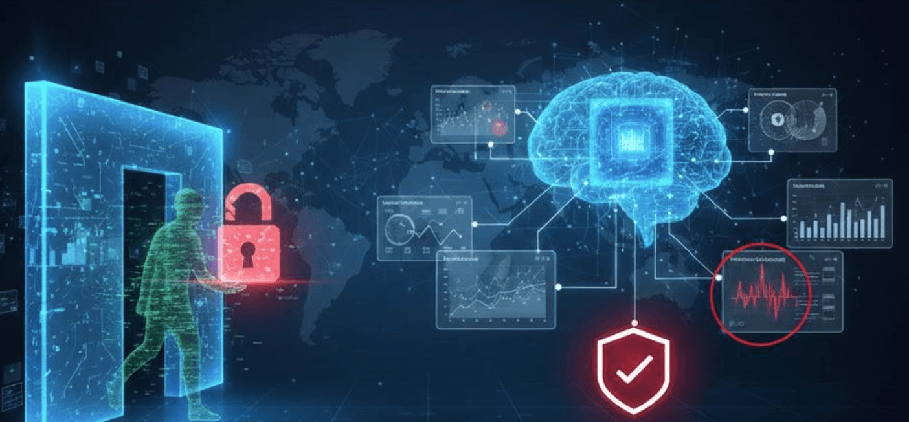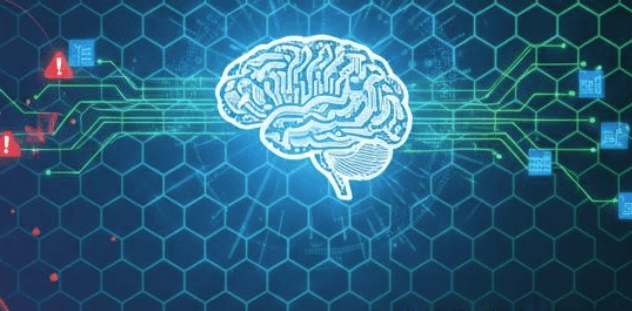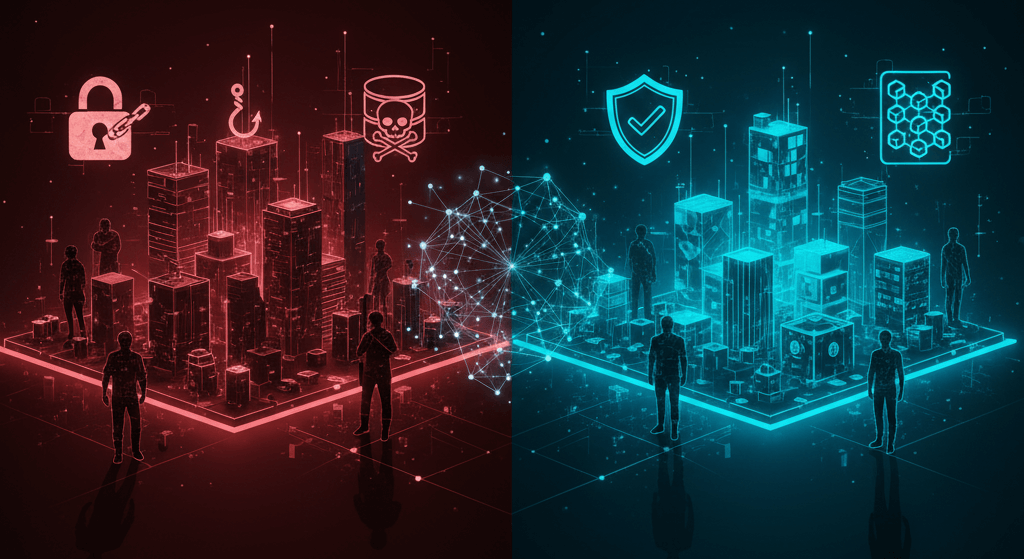
The security vulnerabilities inherent in the current Web2 model are becoming a growing concern for organisations and individuals across the UK. The transition to Web3, underpinned by decentralised technologies like blockchain, offers a compelling vision for enhanced information and data security. Understanding this shift is crucial.
At Mondas, our team of information security professionals leverages cutting-edge software and tools, including advanced AI capabilities, to analyse and address these evolving threats, helping organisations prepare for a more secure, decentralised future.
Unpacking Web2’s Cybersecurity Vulnerabilities
Web2, defined by user-generated content, centralised platforms, and social networking, has fostered immense global connectivity but has also concentrated risk, making it a lucrative target for cybercrime.
Data Breaches and Centralisation
The centralised architecture of most Web2 services means a single point of failure can lead to catastrophic data breaches. High-profile incidents continue to expose sensitive user data, leading to severe financial, regulatory, and reputational damage for businesses.
Phishing and Credential Theft
The need for multiple accounts across numerous services has made users susceptible to sophisticated phishing attacks. Furthermore, the common practice of reusing passwords fuels Credential Stuffing, where leaked login details are exploited to infiltrate multiple systems, dramatically escalating security risks. Guidance from bodies like the National Cyber Security Centre (NCSC) provides public-facing advice on mitigating such common attacks.
Social Engineering Exploits
Social media platforms are now powerful reconnaissance tools for threat actors, enabling them to gather extensive personal information used in highly convincing social engineering attacks to manipulate individuals into compromising sensitive data.
Malware and Ransomware
The sophistication of malware and ransomware attacks has surged. These targeted assaults can cripple critical organisational infrastructure, with attackers demanding substantial ransoms which is a growing concern that underscores the financial fragility of centralised data systems.
Web3 and Blockchain: A New Security Paradigm
Web3 promises a fundamental change, moving from a centralised to a decentralised web powered by blockchain technology. This shift is designed to empower users and inherently enhance security. The core advantages include:
Decentralisation Mitigates Single Points of Failure
By distributing data across a global network of nodes, Web3 drastically reduces the risk associated with centralised data storage. The lack of a single, lucrative target enhances the overall resilience of the system against both targeted and widespread cyberattacks.
Enhanced Privacy via Self-Sovereign Identity (SSI)
Web3 enables individuals to control their own digital identities and personal information. This concept of SSI significantly reduces the need to share sensitive data with third parties, thereby limiting the scope and impact of potential data breaches.
Immutable and Tamper-Proof Records
Once data is stored on a public blockchain, it’s immutable and cannot be altered or deleted. This fundamental feature is vital for maintaining verifiable data integrity, preventing financial fraud, and securing audit trails.
Cryptographic Security as Standard
Advanced cryptographic techniques are baked into the core of Web3, securing user identities, authenticating transactions, and fortifying data protection, providing a necessary layer of security often missing in legacy Web2 systems.
Transparent and Trustless Transactions
Blockchain ensures that all transactions are recorded transparently and are auditable by anyone. This transparency fosters greater accountability, builds trust without relying on intermediaries, and reduces the likelihood of fraudulent activity.
The evolution of Web3
2009 The Birth of Bitcoin
The release of Satoshi Nakamoto’s Bitcoin whitepaper lays the groundwork for blockchain technology, introducing decentralised digital currency.
2013 Introduction of Ethereum
Vitalik Buterin proposes Ethereum, expanding blockchain’s potential with smart contracts and decentralised applications (dApps).
2017 Initial Coin Offerings (ICOs) Surge
The rise of ICOs as a fundraising method highlights growing interest in blockchain technologies and decentralised solutions.
2020 DeFi Explosion
The emergence of decentralised finance (DeFi) challenges conventional financial systems, offering users new avenues for lending, borrowing, and trading without intermediaries.
2021 Non-Fungible Tokens (NFTs) and the Metaverse
NFTs gain popularity, revolutionising art and entertainment, while the concept of a blockchain-powered metaverse is explored extensively.
2022 Scaling Solutions and Interoperability
Focus shifts toward resolving scalability challenges and enhancing interoperability among various blockchains, promoting a cohesive Web3 ecosystem.
2023 and Beyond Mainstream Adoption
Growing institutional interest and the development of regulatory frameworks are expected to drive widespread adoption of Web3 and blockchain technologies in everyday applications.
The Impact of AI on the Digital Security Transition
The intersection of Artificial Intelligence (AI) and the Web3 transition presents a dynamic and complex landscape. Our experts understand this duality and how it will shape the future of information security.
- AI as a force for defence: AI-driven tools are essential for the real-time analysis of vast datasets to detect anomalous activity and potential breaches across both Web2 and emerging Web3 platforms. This capability accelerates threat detection, streamlines trading strategies, and proactively identifies vulnerabilities, allowing for swift preventative action.
- AI as an amplified threat: Conversely, the integration of AI can also amplify existing threats. Threat actors are now leveraging AI to generate incredibly sophisticated phishing attacks and deploy automated bots to execute high-frequency, manipulative cyberattacks. This requires a defensive strategy that is equally intelligent and automated.
Actionable Strategy: Securing Your Digital Future
Organisations cannot afford to wait for the full emergence of Web3 to address current security concerns. Mondas advocates for a proactive, tiered approach, merging best-in-class security fundamentals with a forward-looking strategy:
- Prioritise Comprehensive Security Audits: Conduct regular, in-depth assessments of your current systems, focusing on data storage protocols, access controls, and adherence to evolving UK and international cybersecurity compliance standards.
- Enforce Strong Authentication: Beyond implementing unique, complex password policies, mandate Multi-Factor Authentication (MFA) across all accounts. This is a crucial, high-impact action that significantly raises the barrier for entry for most attackers.
- Invest in Human Risk Mitigation: Cyber-resilience is a cultural issue. Provide continuous training to employees on recognising social engineering, phishing, and the secure management of data to build a proactive security-aware workforce.
- Embrace Network Monitoring and Incident Planning: Deploy advanced monitoring tools to detect and flag anomalous behaviour instantly. Crucially, establish a comprehensive, tested Incident Response Plan to ensure a swift, managed, and effective response should a breach occur.
- Strategically Explore Decentralised Solutions: As business feasibility allows, begin testing and integrating relevant Web3 technologies, such as decentralised databases or blockchain-based supply chain applications, to build a future-proof architecture.
Conclusion
Web2’s centralisation has reached an inflection point, with its inherent vulnerabilities posing an ever-increasing risk to data integrity. Web3 offers a transformative, decentralised solution focused on security, privacy, and user empowerment.
To navigate this critical transition successfully, organisations must adopt a strategy that is both grounded in established, robust cybersecurity practices and forward-looking in its embrace of decentralisation and the intelligent application of AI.
By partnering with experts who combine deep sector experience with next-generation tools, you can ensure your information and data security posture is not only compliant but truly resilient and prepared for the digital landscape of tomorrow. Get in touch today to discover how Mondas supports organisations with future-proofing their cybersecurity position.

